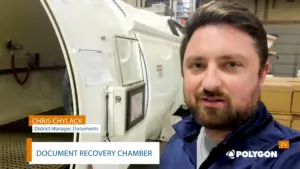Are These the Final Days of the Parking Garage?
Building developers and architects are reinventing the conventional commercial garage. Traditionally, parking garages are multi-level structures that dominate the entrance of a building, making it a challenge for architects to blend them into the surrounding structure. However, the possibility of integrating a fully-automated parking lot rather than a large garage is radically transforming the way architects see parking and is providing new ways to better building design.
Traditional parking lots are typically unsightly, inflexible in terms of design, and take up valuable space. They need to accommodate often hundreds of designated parking spots, as well as provide room for maneuvering. Each floor also needs to be high enough for people to comfortably walk between their parking spot and the building, even if they are transporting large objects. Automated parking lots, however, take up significantly less space than conventional garages as they just need space for the car itself. As a result, they are much easier to integrate into the overall design of the space, making it not only more aesthetically-pleasing, but also improving the residents’ parking experience.
Automated parking systems use sensor technology and conveying devices to automatically park and retrieve cars, eliminating the need for designated parking spaces, ramps, and compact turning radius. Despite the complexity of the software and automation involved, the parking process for users is remarkably simple, and the car owners have little involvement in it. The driver takes the car into any available bay and is guided into the exact spot within the space by following the instructions on a screen inside.
Once the car is in place, the driver can leave the car and exit the bay. Just outside the parking lot, using either a specific app or designated parking card, the driver alerts the bay he or she has left. The doors will then close, sensors will scan the space to ensure no-one is inside, and then the car is automatically moved to a suitable storage spot inside.
When the driver wants to get the car, they can use the app or designated card to alert the automated system which will then automatically retrieve their car. The car is delivered into an available empty bay, already facing the door in the right direction. A screen on the app or at the card machine advises the driver which bay to collect the car from. The whole process takes a matter of minutes and is generally more efficient and quicker than traditional parking.
For building developers, this development is revolutionary and offers new opportunities for the future of construction. Automated parking lots increase the overall value of the building project while at the same time reducing construction costs, which can lead to a potentially wider profit margin. It also uses up less resources and frees up more building space which the developer can use to build more residential units or create more open or green space.
For the residents, having automated parking systems improves the overall living space. They no longer need to walk through an underground parking structure and can instead leave their car in the bay and walk straight through the main entrance into their building. It also improves the flow of traffic around the building by speeding up parking time and avoiding a backlog of cars waiting to park. Inside the covered storage space, the car is completely safe from theft, vandalism, and any accidental parking damage. For architects, it allows them more creative freedom to integrate an ‘invisible’ parking lot into their design and make the entire residential space more visually-pleasant and better for the residents.
The future of automated parking lots is an exciting one for building developers and architects. It provides more possibilities for building design and adds value to the residents’ living experience.
For the latest news, videos, and podcasts in the Building Management Industry, be sure to subscribe to our industry publication.
Follow us on social media for the latest updates in B2B!
Twitter – @BuildingMKSL
Facebook – facebook.com/marketscale
LinkedIn – linkedin.com/company/marketscale







